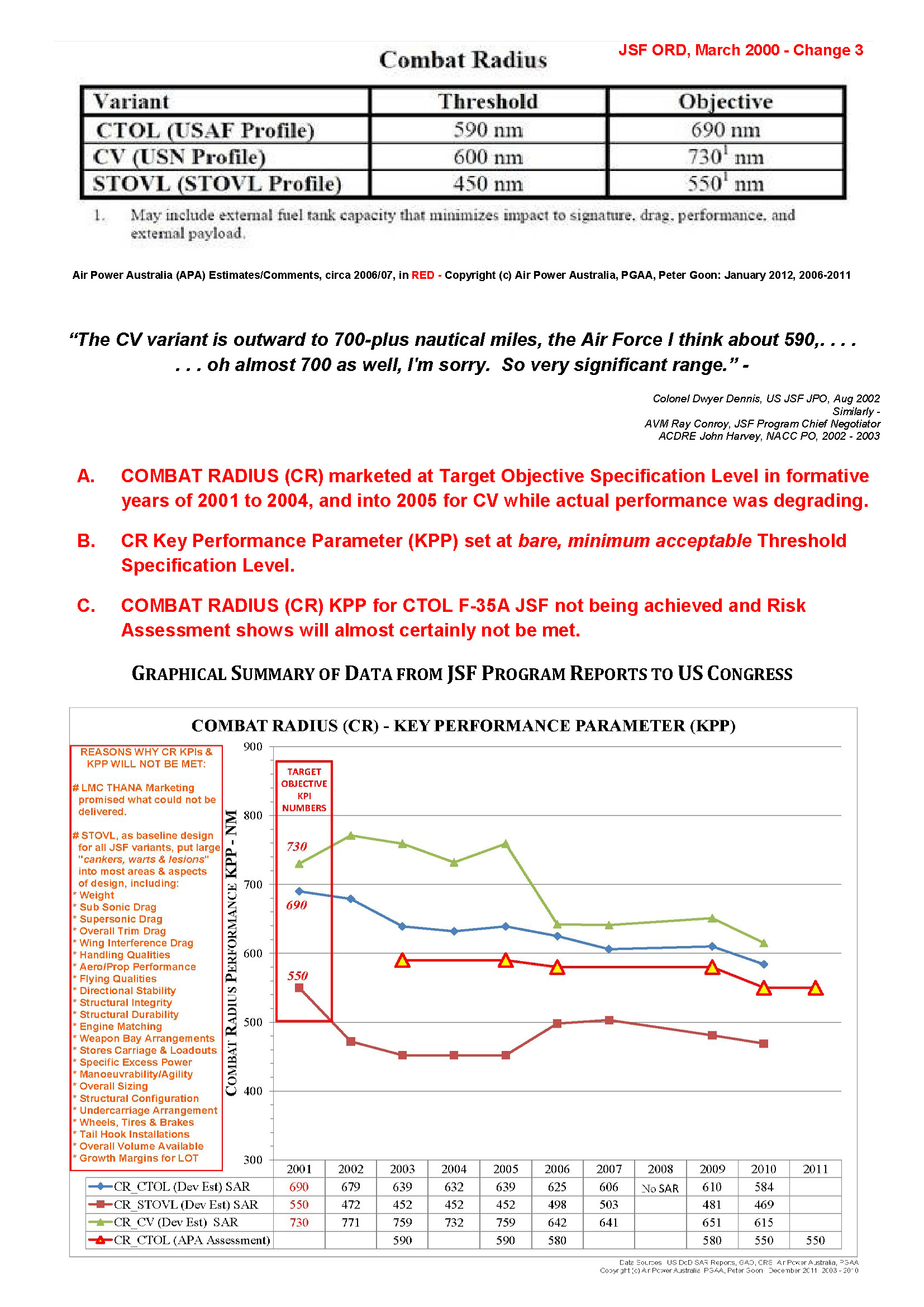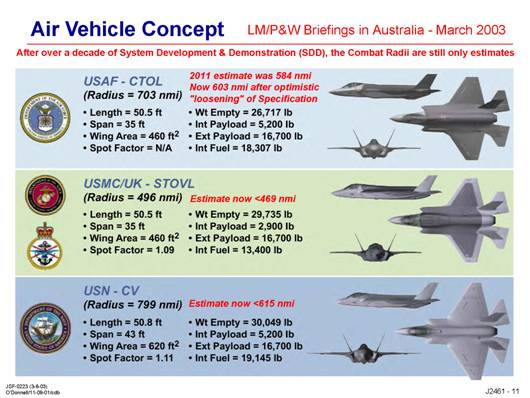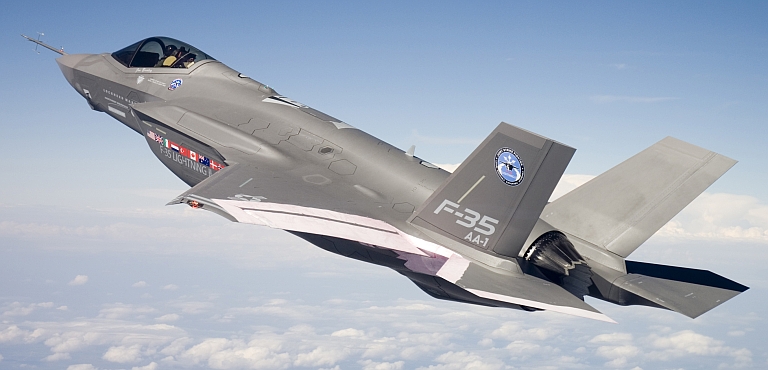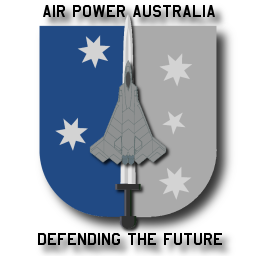|
From: Peter Goon
Sent: 20 March 2012 14:28
To: 'Dr Dennis Jensen, MP'; 'Senator Mark Furner, Chair'; 'Little,
Robert (REPS)'
Cc: APA_Peer_Review_Group
Subject: APA Submission No 4 to the JSCFADT Hearings into the JSF -
Thana Marketing, KPIs and the JSF Program
Attachments: CPA21_02_JSF-Capability-Briefing_21Aug02.pdf;
CR_Pg16_MUF.pdf; F135 Supplier Briefing_Aust_March-2002_Air Vehicle
Concept_Pg 11_MU.PDF; DAR-Review_2010-11 _APA Sub4_ThanaM &
KPIs_20Mar12.pdf
Dear Senator Furner, Dr Jensen and Mr Little:
The following submission is provided to the JSCFADT in support of your
pursuit of the truth in relation to the JSF Program and Australia’s
involvement in same.
Subject: DOES THE JSF FULFIL ALL THAT WAS PROMISED
BACK IN 2002?
The simple, direct, plain language answer to this question is, “No how;
No way!”.
Studying the JSF Program, in detail, by looking at the data and the
facts, then testing the evidence, there can be little doubt that this
is because the marketing strategy for the JSF Program and resulting
marketing activities were and continue to be based upon what is known
in the professional marketing community as Thana-Marketing .
Thana-Marketing refers to the systematic, covert, and (initially)
profitable maltreatment of target customers through the use of
misleading and deceptive marketing practises.
A Thana-Marketing strategy or mix represents a 'hidden set' of
interrelated Ps (the "8Ps that dare not speak their name" according to Dr
Mark Wickham , the author of seminal works on this form of
marketing
behaviour) that potentially comprise a mix of management conduct and
philosophy that corrupts the marketing concept and underpins society's
contempt for marketing and immoral business practices.
Thana-Marketing Mix categories include:(1) Misleading representations;
(2) Price-fixing; (3) Component pricing; (4) Anti-competitive
practices; & (5) Harassment.
More detailed information on Thana-Marketing may be found on The
Marketing Association of Australia and New Zealand web site.
The following outlines some examples of Thana-Marketing behaviours that
have been observed and analysed within the JSF Program of Record. There
are many, many more.
Background
There are some 453 “shall” statements in the JSF Operational
Requirements Document (JORD) which form the Key Performance Indicators
(KPIs) of which a number have been selected as the Key Performance
Parameters (KPPs).
In the main, there are two levels of specification numbers to be met by
the designs of the JSF. The first are what are known as the Target
Objective Specifications. These are what the designs are supposed to
meet. The second set of specifications are called the Threshold
Specifications which are considered “the bare minimum acceptable”.
The following is an illustration of these two sets of specification
levels/numbers in the JSF ORD for one of the 453 KPIs, along with an
outlined summary of the history of this particular KPP – the Combat
Radius KPP -as reported to the US Congress in the Selected Acquisition
Reports.

Back in August 2002 when the negotiations concerning Australia joining
the SDD Phase of the JSF Program were at their zenith, Colonel Dwyer
Dennis from the US JSF Program Office in the Pentagon, supported by
Lockheed Martin’s Business Development Manager for Australia/South East
Asia, Mr David Scott and other LMC representatives, publicly stated the
following while in Australia:
COLONEL DWYER DENNIS: “I'm going to talk a little bit about what we
call KPPs, or Key Performance Parameters. The key performance
parameters on a program are those requirements that are the make or
break on a program.”
“You miss a KPP and your program is subject to cancellation or major
rework. We don't intend for that to happen. And, as you can see at the
bottom of the bumper sticker, it's projected to meet or exceed all of
the requirements. What a focus you see here in purple.”
“Those KPPs are common against all of the variants. The other key
aspect I'd like to bring out is out of the six common KPPs, three of
them - sortie generation, logistics footprint and mission reliability -
all speak to that supportability of the Joint Strike Fighter. That's
very unique in a program right up front. We are giving emphasis to the
long-term total ownership cost of this air system.”
“One thing that I didn't talk about earlier, and I think it was on the
earlier chart about the fuel capacities, is that because this is a
stealth aircraft it has internal weapon bays and to make it stealth the
weapons have to be internal in a low-observable mode, so that makes the
plane pretty thick and so that gives you a lot of room for fuel. So
these aircraft have tremendous range.”
“The CV variant is outward to almost 700 - is that correct Wheaty,
700?, 700, yes 700-plus nautical miles, the Air Force I think about
590, oh almost 700 as well, I'm sorry. So very significant range.
That's no external fuel tanks, just the internal mission fuel. Oh, here
we are [laughs] it's right down here.”
The following slide is from a later presentation in Australia by
Lockheed Martin and other JSF contractors. Updated data is in red. Also
note how the empty weights have changed on all variants and markedly.
The weight increase of the F-35A CTOL JSF is equivalent to strapping a
2012 model Honda Civic car to the aircraft; as is the increase in drag.

On the matter of
affordability and costs, the JSF Project Team said the
following:
COLONEL DWYER DENNIS: “You can see across the three variants, even
though they will meet the unique mission requirements, there's great
commonality between the aircraft. I'll talk a little bit about that
more in the next slide - next couple of slides. But that commonality is
key to the affordability aspect of the program.”
“The bottom line on affordability is that it's not affordable if it
doesn't meet the operational requirements that the war fighter needs.
So that's the standard and that's where we go back to at least
performance at least as good as an F-16 or F-18.”
DAVID SCOTT: “Well, the design objectives on the JSF program are to
cut
the O and S cost by 50 per cent. And what we do is we have several
bases for doing that. One is there's a high reliability in the
airplane. The systems are designed to be inherently highly reliable,
such as the radar which we project it will not require servicing of the
antennae during its lifetime as it has full tolerance built in.”
QUESTION: “Geoff Barker, Australian Financial Review. And, just to
Colonel Dennis, you kept talking about the affordability of this
aircraft and yet you only defined affordability in negative terms,
saying it would not be affordable if it did not meet the mission
requirement.
Can you tell us what the price of it is”
COLONEL DWYER DENNIS: “Well, right now, the unit recurring flyaway
cost
that we've estimated in 2001 dollars, dependant on the variant, is
anywhere from $37-$48 million. It's about $37 million for the CTOL
aircraft, which is the Airforce Variant.”
If affordability were truly “the cornerstone of the JSF Program”,
then
why was affordability not set as a KPP?
The full Department of Defence transcript of this briefing, a copy of
which is attached, makes for a very interesting and informative read.
When viewed through the prism of the definition of Thana-Marketing, the
resulting images are both stark and chilling.
Finally, here are some questions that have been compiled in order to
aid in answering the subject question in a way that is objective,
honest and pragmatic.
Some Questions
In the 2003 Selected Acquisition Report to the US Congress on the Joint
Strike Fighter (JSF) Program of Record, the Pentagon advised:
“Some non-KPP Threshold Requirements will not be met for
all variants.”
- Which non-KPP (a.k.a. KPI) Threshold
Requirements
were not going to be met for all variants of the JSF design?
- Of the 453 or so KPP/KPI at the Threshold
Requirement level, which of these are not being met, today?
- Of the 453 or so KPP/KPI at the Target
Objective
Requirement level, which of these are being met, today?
- Of the same 453 or so KPP/KPI Target Objective
Requirements which of these are being exceeded or expected to be
exceeded, today?
- Of the same 453 or so KPP/KPI Requirements,
which
have had either the basis of their Threshold or Target Objective levels
“relaxed” since the JORD was approved by the JROC in March 2000, as has
just been done for the CTOL Combat Radius KPP, the STOVL short take off
distance and the CV carrier landing approach speed.
If the Committee has any queries on the material
provided in this
submission or any other matters in relation to doing what is right and
what is best for the defence and security of Australia, we would be
more than willing, once again, to put “Service before Self”.
For your
convenience, a PDF copy of this submission is also attached.
Yours Sincerely,
Peter Goon
Principal Consultant/Advisor Head of Test and Evaluation Co‐Founder,
Air Power Australia
"Our role is to be so capable and so well prepared that the other guy
doesn't even think about taking us on."
Australian Defence Force
Leadership prior to 2000
|
|
![Home - Air Power Australia Website [Click for more ...]](APA/APA-Title-NOTAM.png)
![Sukhoi PAK-FA and Flanker Index Page [Click for more ...]](APA/flanker.png)
![F-35 Joint Strike Fighter Index Page [Click for more ...]](APA/jsf.png)
![Weapons Technology Index Page [Click for more ...]](APA/weps.png)
![News and Media Related Material Index Page [Click for more ...]](APA/media.png)
![Surface to Air Missile Systems / Integrated Air Defence Systems Index Page [Click for more ...]](APA/sams-iads.png)
![Ballistic Missiles and Missile Defence Page [Click for more ...]](APA/msls-bmd.png)
![Air Power and National Military Strategy Index Page [Click for more ...]](APA/strategy.png)
![Military Aviation Historical Topics Index Page [Click for more ...]](APA/history.png)
![Intelligence, Surveillance and Reconnaissance and Network Centric Warfare Index Page [Click for more ...]](APA/isr-ncw.png)
![Information Warfare / Operations and Electronic Warfare Index Page [Click for more ...]](APA/iw.png)
![Systems and Basic Technology Index Page [Click for more ...]](APA/technology.png)
![Related Links Index Page [Click for more ...]](APA/links.png)
![Homepage of Australia's First Online Journal Covering Air Power Issues (ISSN 1832-2433) [Click for more ...]](APA/apa-analyses.png)
![Home - Air Power Australia Website [Click for more ...]](APA/APA-Title-NOTAM.png)
![Sukhoi PAK-FA and Flanker Index Page [Click for more ...]](APA/flanker.png)
![F-35 Joint Strike Fighter Index Page [Click for more ...]](APA/jsf.png)
![Weapons Technology Index Page [Click for more ...]](APA/weps.png)
![News and Media Related Material Index Page [Click for more ...]](APA/media.png)
![Surface to Air Missile Systems / Integrated Air Defence Systems Index Page [Click for more ...]](APA/sams-iads.png)
![Ballistic Missiles and Missile Defence Page [Click for more ...]](APA/msls-bmd.png)
![Air Power and National Military Strategy Index Page [Click for more ...]](APA/strategy.png)
![Military Aviation Historical Topics Index Page [Click for more ...]](APA/history.png)
![Intelligence, Surveillance and Reconnaissance and Network Centric Warfare Index Page [Click for more ...]](APA/isr-ncw.png)
![Information Warfare / Operations and Electronic Warfare Index Page [Click for more ...]](APA/iw.png)
![Systems and Basic Technology Index Page [Click for more ...]](APA/technology.png)
![Related Links Index Page [Click for more ...]](APA/links.png)
![Homepage of Australia's First Online Journal Covering Air Power Issues (ISSN 1832-2433) [Click for more ...]](APA/apa-analyses.png)


![Sukhoi PAK-FA and Flanker Index Page [Click for more ...]](APA/flanker.png)
![F-35 Joint Strike Fighter Index Page [Click for more ...]](APA/jsf.png)
![Weapons Technology Index Page [Click for more ...]](APA/weps.png)
![News and Media Related Material Index Page [Click for more ...]](APA/media.png)
![Surface to Air Missile Systems / Integrated Air Defence Systems Index Page [Click for more ...]](APA/sams-iads.png)
![Ballistic Missiles and Missile Defence Page [Click for more ...]](APA/msls-bmd.png)
![Air Power and National Military Strategy Index Page [Click for more ...]](APA/strategy.png)
![Military Aviation Historical Topics Index Page [Click for more ...]](APA/history.png)
![Information Warfare / Operations and Electronic Warfare Index Page [Click for more ...]](APA/iw.png)
![Systems and Basic Technology Index Page [Click for more ...]](APA/technology.png)
![Related Links Index Page [Click for more ...]](APA/links.png)
![Homepage of Australia's First Online Journal Covering Air Power Issues (ISSN 1832-2433) [Click for more ...]](APA/apa-analyses.png)